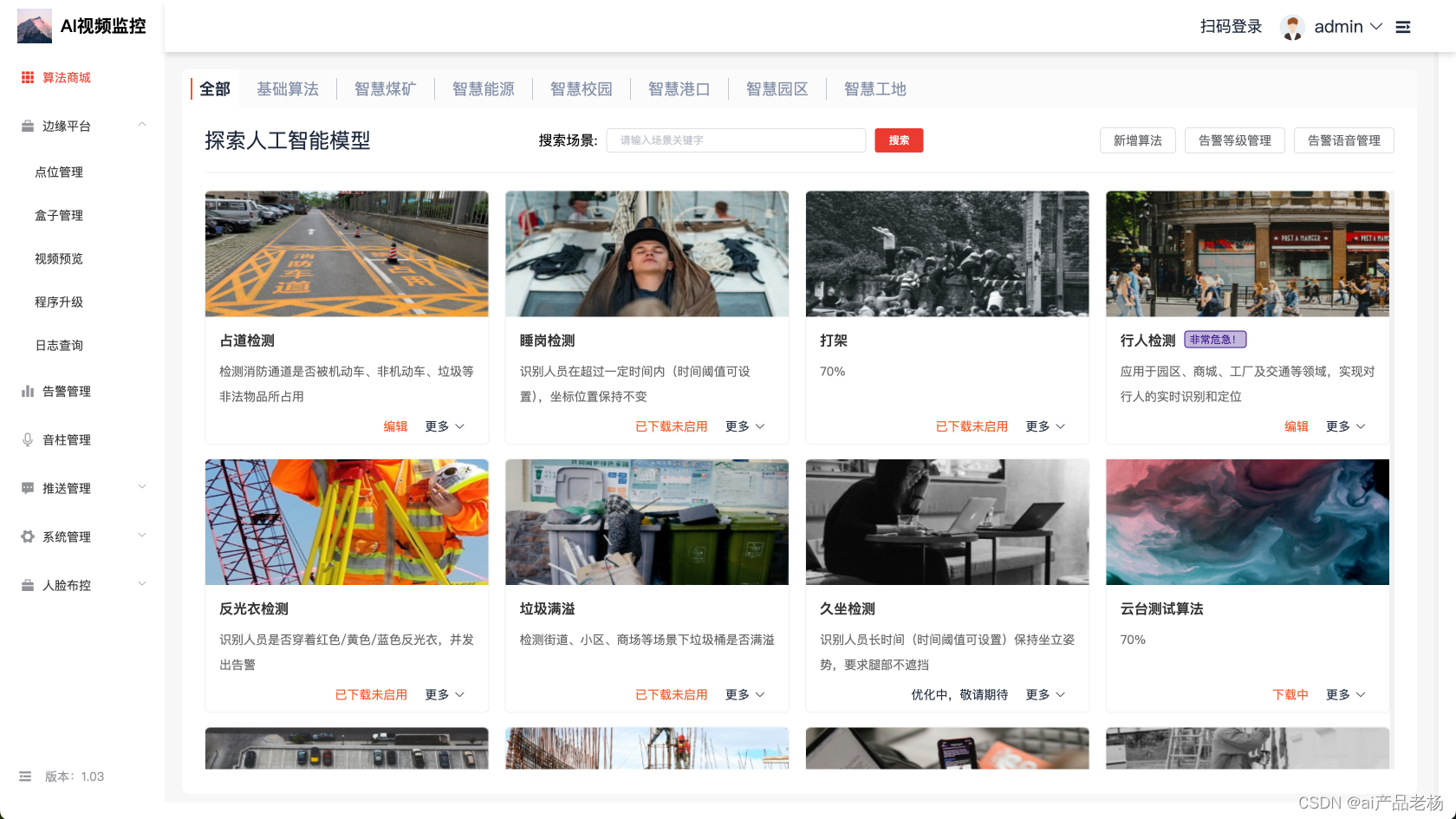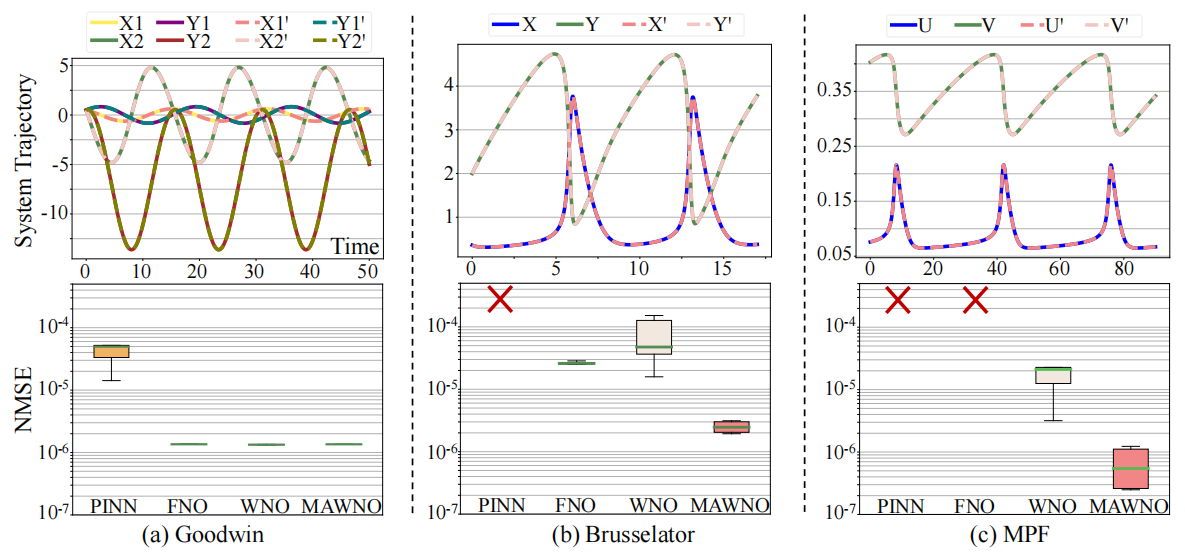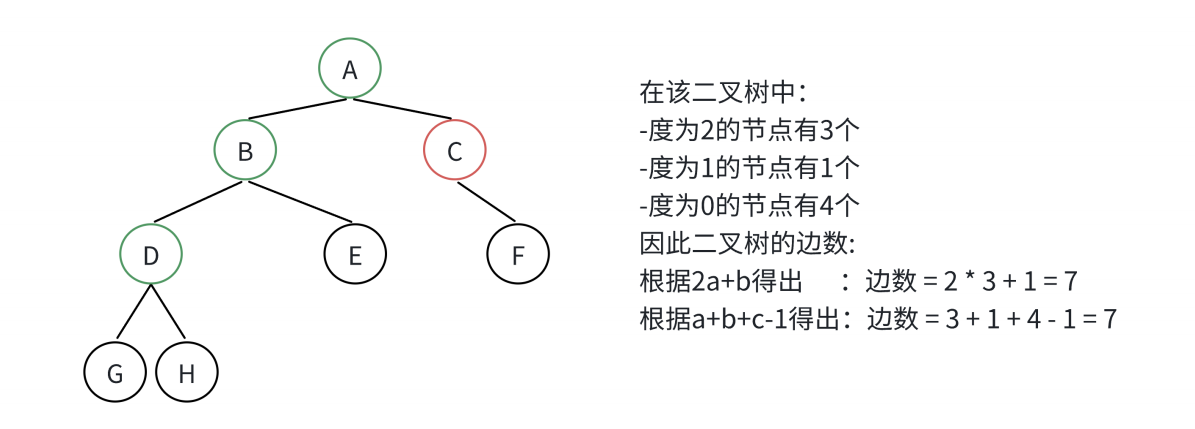序
本文主要研究一下rocketmq5的RocketMQClientTemplate
rocketmq-spring
自从rocketmq推出了5版本之后,rocketmq-spring就区分了4.x与5.x版本,4.x版本是rocketmq-spring开头,5.x版本是rocketmq-v5-client开头;rocketmq5的RocketMQClientTemplate对应的是旧版的RocketMQTemplate,他们都同样继承了org.springframework.messaging.core.AbstractMessageSendingTemplate,只是各自扩展的方法发生的变化。
RocketMQTemplate
主要是:
- sendAndReceive
- syncSend、syncSendDelayTimeSeconds、syncSendDelayTimeMills、syncSendDeliverTimeMills、syncSendOrderly
- asyncSend、asyncSendOrderly
- sendOneWay、sendOneWayOrderly
- sendMessageInTransaction
RocketMQClientTemplate
主要是:
- syncSendNormalMessage、syncSendFifoMessage、syncSendDelayMessage
- asyncSendNormalMessage、asyncSendFifoMessage、asyncSendDelayMessage
- asyncSendWithObjectPayload、asyncSendWithStringPayload、asyncSendWithBytePayload、asyncSendWithMessagePayload
- sendMessageInTransaction
- receive、receiveAsync
- ack、ackAsync
MessageSendingOperations
org/springframework/messaging/core/MessageSendingOperations.java
public interface MessageSendingOperations<D> {/*** Send a message to a default destination.* @param message the message to send*/void send(Message<?> message) throws MessagingException;/*** Send a message to the given destination.* @param destination the target destination* @param message the message to send*/void send(D destination, Message<?> message) throws MessagingException;/*** Convert the given Object to serialized form, possibly using a* {@link org.springframework.messaging.converter.MessageConverter},* wrap it as a message and send it to a default destination.* @param payload the Object to use as payload*/void convertAndSend(Object payload) throws MessagingException;/*** Convert the given Object to serialized form, possibly using a* {@link org.springframework.messaging.converter.MessageConverter},* wrap it as a message and send it to the given destination.* @param destination the target destination* @param payload the Object to use as payload*/void convertAndSend(D destination, Object payload) throws MessagingException;/*** Convert the given Object to serialized form, possibly using a* {@link org.springframework.messaging.converter.MessageConverter},* wrap it as a message with the given headers and send it to* the given destination.* @param destination the target destination* @param payload the Object to use as payload* @param headers the headers for the message to send*/void convertAndSend(D destination, Object payload, Map<String, Object> headers) throws MessagingException;/*** Convert the given Object to serialized form, possibly using a* {@link org.springframework.messaging.converter.MessageConverter},* wrap it as a message, apply the given post processor, and send* the resulting message to a default destination.* @param payload the Object to use as payload* @param postProcessor the post processor to apply to the message*/void convertAndSend(Object payload, @Nullable MessagePostProcessor postProcessor) throws MessagingException;/*** Convert the given Object to serialized form, possibly using a* {@link org.springframework.messaging.converter.MessageConverter},* wrap it as a message, apply the given post processor, and send* the resulting message to the given destination.* @param destination the target destination* @param payload the Object to use as payload* @param postProcessor the post processor to apply to the message*/void convertAndSend(D destination, Object payload, MessagePostProcessor postProcessor) throws MessagingException;/*** Convert the given Object to serialized form, possibly using a* {@link org.springframework.messaging.converter.MessageConverter},* wrap it as a message with the given headers, apply the given post processor,* and send the resulting message to the given destination.* @param destination the target destination* @param payload the Object to use as payload* @param headers the headers for the message to send* @param postProcessor the post processor to apply to the message*/void convertAndSend(D destination, Object payload, @Nullable Map<String, Object> headers,@Nullable MessagePostProcessor postProcessor) throws MessagingException;}
spring-messaging的MessageSendingOperations接口定义了send、convertAndSend方法
AbstractMessageSendingTemplate
org/springframework/messaging/core/AbstractMessageSendingTemplate.java
public abstract class AbstractMessageSendingTemplate<D> implements MessageSendingOperations<D> {/*** Name of the header that can be set to provide further information* (e.g. a {@code MethodParameter} instance) about the origin of the* payload, to be taken into account as a conversion hint.* @since 4.2*/public static final String CONVERSION_HINT_HEADER = "conversionHint";protected final Log logger = LogFactory.getLog(getClass());@Nullableprivate D defaultDestination;private MessageConverter converter = new SimpleMessageConverter();/*** Configure the default destination to use in send methods that don't have* a destination argument. If a default destination is not configured, send methods* without a destination argument will raise an exception if invoked.*/public void setDefaultDestination(@Nullable D defaultDestination) {this.defaultDestination = defaultDestination;}/*** Return the configured default destination.*/@Nullablepublic D getDefaultDestination() {return this.defaultDestination;}/*** Set the {@link MessageConverter} to use in {@code convertAndSend} methods.* <p>By default, {@link SimpleMessageConverter} is used.* @param messageConverter the message converter to use*/public void setMessageConverter(MessageConverter messageConverter) {Assert.notNull(messageConverter, "MessageConverter must not be null");this.converter = messageConverter;}/*** Return the configured {@link MessageConverter}.*/public MessageConverter getMessageConverter() {return this.converter;}@Overridepublic void send(Message<?> message) {send(getRequiredDefaultDestination(), message);}protected final D getRequiredDefaultDestination() {Assert.state(this.defaultDestination != null, "No 'defaultDestination' configured");return this.defaultDestination;}@Overridepublic void send(D destination, Message<?> message) {doSend(destination, message);}protected abstract void doSend(D destination, Message<?> message);@Overridepublic void convertAndSend(Object payload) throws MessagingException {convertAndSend(payload, null);}@Overridepublic void convertAndSend(D destination, Object payload) throws MessagingException {convertAndSend(destination, payload, (Map<String, Object>) null);}@Overridepublic void convertAndSend(D destination, Object payload, @Nullable Map<String, Object> headers)throws MessagingException {convertAndSend(destination, payload, headers, null);}@Overridepublic void convertAndSend(Object payload, @Nullable MessagePostProcessor postProcessor)throws MessagingException {convertAndSend(getRequiredDefaultDestination(), payload, postProcessor);}@Overridepublic void convertAndSend(D destination, Object payload, @Nullable MessagePostProcessor postProcessor)throws MessagingException {convertAndSend(destination, payload, null, postProcessor);}@Overridepublic void convertAndSend(D destination, Object payload, @Nullable Map<String, Object> headers,@Nullable MessagePostProcessor postProcessor) throws MessagingException {Message<?> message = doConvert(payload, headers, postProcessor);send(destination, message);}/*** Convert the given Object to serialized form, possibly using a* {@link MessageConverter}, wrap it as a message with the given* headers and apply the given post processor.* @param payload the Object to use as payload* @param headers the headers for the message to send* @param postProcessor the post processor to apply to the message* @return the converted message*/protected Message<?> doConvert(Object payload, @Nullable Map<String, Object> headers,@Nullable MessagePostProcessor postProcessor) {MessageHeaders messageHeaders = null;Object conversionHint = (headers != null ? headers.get(CONVERSION_HINT_HEADER) : null);Map<String, Object> headersToUse = processHeadersToSend(headers);if (headersToUse != null) {if (headersToUse instanceof MessageHeaders) {messageHeaders = (MessageHeaders) headersToUse;}else {messageHeaders = new MessageHeaders(headersToUse);}}MessageConverter converter = getMessageConverter();Message<?> message = (converter instanceof SmartMessageConverter ?((SmartMessageConverter) converter).toMessage(payload, messageHeaders, conversionHint) :converter.toMessage(payload, messageHeaders));if (message == null) {String payloadType = payload.getClass().getName();Object contentType = (messageHeaders != null ? messageHeaders.get(MessageHeaders.CONTENT_TYPE) : null);throw new MessageConversionException("Unable to convert payload with type='" + payloadType +"', contentType='" + contentType + "', converter=[" + getMessageConverter() + "]");}if (postProcessor != null) {message = postProcessor.postProcessMessage(message);}return message;}/*** Provides access to the map of input headers before a send operation.* Subclasses can modify the headers and then return the same or a different map.* <p>This default implementation in this class returns the input map.* @param headers the headers to send (or {@code null} if none)* @return the actual headers to send (or {@code null} if none)*/@Nullableprotected Map<String, Object> processHeadersToSend(@Nullable Map<String, Object> headers) {return headers;}}
AbstractMessageSendingTemplate对MessageSendingOperations的接口做了实现,它定义了
doSend(D destination, Message<?> message)需要子类实现
RocketMQClientTemplate
rocketmq-v5-client-spring-boot/src/main/java/org/apache/rocketmq/client/core/RocketMQClientTemplate.java
@SuppressWarnings({"WeakerAccess", "unused"})
public class RocketMQClientTemplate extends AbstractMessageSendingTemplate<String> implements DisposableBean {private static final Logger log = LoggerFactory.getLogger(RocketMQClientTemplate.class);private ProducerBuilder producerBuilder;private SimpleConsumerBuilder simpleConsumerBuilder;private volatile Producer producer;private volatile SimpleConsumer simpleConsumer;private RocketMQMessageConverter rocketMQMessageConverter = new RocketMQMessageConverter();private String charset = "UTF-8";@Overrideprotected void doSend(String destination, Message<?> message) {SendReceipt sendReceipt = syncSendGrpcMessage(destination, message, null, null);if (log.isDebugEnabled()) {log.debug("send message to `{}` finished. result:{}", destination, sendReceipt);}}/*** @param destination formats: `topicName:tags`* @param message {@link Message} the message to be sent.* @param messageDelayTime Time for message delay* @param messageGroup message group name* @return SendReceipt Synchronous Task Results*/public SendReceipt syncSendGrpcMessage(String destination, Message<?> message, Duration messageDelayTime, String messageGroup) {if (Objects.isNull(message) || Objects.isNull(message.getPayload())) {log.error("send request message failed. destination:{}, message is null ", destination);throw new IllegalArgumentException("`message` and `message.payload` cannot be null");}SendReceipt sendReceipt = null;try {org.apache.rocketmq.client.apis.message.Message rocketMsg = this.createRocketMQMessage(destination, message, messageDelayTime, messageGroup);Producer grpcProducer = this.getProducer();try {sendReceipt = grpcProducer.send(rocketMsg);log.info("Send message successfully, messageId={}", sendReceipt.getMessageId());} catch (Throwable t) {log.error("Failed to send message", t);}} catch (Exception e) {log.error("send request message failed. destination:{}, message:{} ", destination, message);throw new MessagingException(e.getMessage(), e);}return sendReceipt;} private org.apache.rocketmq.client.apis.message.Message createRocketMQMessage(String destination, Message<?> message, Duration messageDelayTime, String messageGroup) {Message<?> msg = this.doConvert(message.getPayload(), message.getHeaders(), null);return RocketMQUtil.convertToClientMessage(getMessageConverter(), charset,destination, msg, messageDelayTime, messageGroup);} //......
}
RocketMQClientTemplate继承了AbstractMessageSendingTemplate,其doSend方法调用的是syncSendGrpcMessage;该方法主要是调用父类的doConvert转换为spring-messaging的Message,之后再通过RocketMQUtil.convertToClientMessage转换为org.apache.rocketmq.client.apis.message.Message,最后通过grpcProducer.send(rocketMsg)进行发送
syncSendNormalMessage
public SendReceipt syncSendNormalMessage(String destination, Object payload) {Message<?> message = MessageBuilder.withPayload(payload).build();return syncSendGrpcMessage(destination, message, null, null);}public SendReceipt syncSendNormalMessage(String destination, String payload) {Message<?> message = MessageBuilder.withPayload(payload).build();return syncSendGrpcMessage(destination, message, null, null);}public SendReceipt syncSendNormalMessage(String destination, Message<?> message) {return syncSendGrpcMessage(destination, message, null, null);}public SendReceipt syncSendNormalMessage(String destination, byte[] payload) {Message<?> message = MessageBuilder.withPayload(payload).build();return syncSendGrpcMessage(destination, message, null, null);}
syncSendNormalMessage主要是通过MessageBuilder构建Message,然后通过syncSendGrpcMessage进行发送
syncSendFifoMessage
public SendReceipt syncSendFifoMessage(String destination, Object payload, String messageGroup) {Message<?> message = MessageBuilder.withPayload(payload).build();return syncSendGrpcMessage(destination, message, null, messageGroup);}public SendReceipt syncSendFifoMessage(String destination, String payload, String messageGroup) {Message<?> message = MessageBuilder.withPayload(payload).build();return syncSendGrpcMessage(destination, message, null, messageGroup);}public SendReceipt syncSendFifoMessage(String destination, byte[] payload, String messageGroup) {Message<?> message = MessageBuilder.withPayload(payload).build();return syncSendGrpcMessage(destination, message, null, messageGroup);}public SendReceipt syncSendFifoMessage(String destination, Message<?> message, String messageGroup) {return syncSendGrpcMessage(destination, message, null, messageGroup);}
syncSendFifoMessage也是通过MessageBuilder构建Message,只是通过syncSendGrpcMessage进行发送时指定了messageGroup
syncSendDelayMessage
public SendReceipt syncSendDelayMessage(String destination, Object payload, Duration messageDelayTime) {Message<?> message = MessageBuilder.withPayload(payload).build();return syncSendGrpcMessage(destination, message, messageDelayTime, null);}public SendReceipt syncSendDelayMessage(String destination, String payload, Duration messageDelayTime) {Message<?> message = MessageBuilder.withPayload(payload).build();return syncSendGrpcMessage(destination, message, messageDelayTime, null);}public SendReceipt syncSendDelayMessage(String destination, byte[] payload, Duration messageDelayTime) {Message<?> message = MessageBuilder.withPayload(payload).build();return syncSendGrpcMessage(destination, message, messageDelayTime, null);}public SendReceipt syncSendDelayMessage(String destination, Message<?> message, Duration messageDelayTime) {return syncSendGrpcMessage(destination, message, messageDelayTime, null);}
syncSendDelayMessage也是通过MessageBuilder构建Message,只是通过syncSendGrpcMessage进行发送时指定了messageDelayTime
asyncSend
public CompletableFuture<SendReceipt> asyncSend(String destination, Message<?> message, Duration messageDelayTime, String messageGroup, CompletableFuture<SendReceipt> future) {if (Objects.isNull(message) || Objects.isNull(message.getPayload())) {log.error("send request message failed. destination:{}, message is null ", destination);throw new IllegalArgumentException("`message` and `message.payload` cannot be null");}Producer grpcProducer = this.getProducer();try {org.apache.rocketmq.client.apis.message.Message rocketMsg = this.createRocketMQMessage(destination, message, messageDelayTime, messageGroup);future = grpcProducer.sendAsync(rocketMsg);} catch (Exception e) {log.error("send request message failed. destination:{}, message:{} ", destination, message);throw new MessagingException(e.getMessage(), e);}return future;}public CompletableFuture<SendReceipt> asyncSendWithObjectPayload(String destination, Object payload, Duration messageDelayTime, String messageGroup, CompletableFuture<SendReceipt> future) {Message<?> message = MessageBuilder.withPayload(payload).build();return asyncSend(destination, message, messageDelayTime, messageGroup, future);}public CompletableFuture<SendReceipt> asyncSendWithStringPayload(String destination, String payload, Duration messageDelayTime, String messageGroup, CompletableFuture<SendReceipt> future) {Message<?> message = MessageBuilder.withPayload(payload).build();return asyncSend(destination, message, messageDelayTime, messageGroup, future);}public CompletableFuture<SendReceipt> asyncSendWithBytePayload(String destination, byte[] payload, Duration messageDelayTime, String messageGroup, CompletableFuture<SendReceipt> future) {Message<?> message = MessageBuilder.withPayload(payload).build();return asyncSend(destination, message, messageDelayTime, messageGroup, future);}public CompletableFuture<SendReceipt> asyncSendWithMessagePayload(String destination, Message<?> payload, Duration messageDelayTime, String messageGroup, CompletableFuture<SendReceipt> future) {return asyncSend(destination, payload, messageDelayTime, messageGroup, future);}
asyncSend与syncSendGrpcMessage类似先通过createRocketMQMessage转换为org.apache.rocketmq.client.apis.message.Message,只是最后调用的是grpcProducer.sendAsync来发送;asyncSendWithObjectPayload、asyncSendWithStringPayload、asyncSendWithBytePayload、asyncSendWithMessagePayload最后调用的是asyncSend方法
asyncSendNormalMessage
public CompletableFuture<SendReceipt> asyncSendNormalMessage(String destination, Object payload, CompletableFuture<SendReceipt> future) {return asyncSendWithObjectPayload(destination, payload, null, null, future);}public CompletableFuture<SendReceipt> asyncSendNormalMessage(String destination, String payload, CompletableFuture<SendReceipt> future) {return asyncSendWithStringPayload(destination, payload, null, null, future);}public CompletableFuture<SendReceipt> asyncSendNormalMessage(String destination, byte[] payload, CompletableFuture<SendReceipt> future) {return asyncSendWithBytePayload(destination, payload, null, null, future);}public CompletableFuture<SendReceipt> asyncSendNormalMessage(String destination, Message<?> payload, CompletableFuture<SendReceipt> future) {return asyncSendWithMessagePayload(destination, payload, null, null, future);}
asyncSendNormalMessage委托给了asyncSendWithObjectPayload、asyncSendWithStringPayload、asyncSendWithBytePayload、asyncSendWithMessagePayload;最后调用的是asyncSend方法
asyncSendFifoMessage
public CompletableFuture<SendReceipt> asyncSendFifoMessage(String destination, Object payload, String messageGroup, CompletableFuture<SendReceipt> future) {return asyncSendWithObjectPayload(destination, payload, null, messageGroup, future);}public CompletableFuture<SendReceipt> asyncSendFifoMessage(String destination, String payload, String messageGroup, CompletableFuture<SendReceipt> future) {return asyncSendWithStringPayload(destination, payload, null, messageGroup, future);}public CompletableFuture<SendReceipt> asyncSendFifoMessage(String destination, byte[] payload, String messageGroup, CompletableFuture<SendReceipt> future) {return asyncSendWithBytePayload(destination, payload, null, messageGroup, future);}public CompletableFuture<SendReceipt> asyncSendFifoMessage(String destination, Message<?> payload, String messageGroup, CompletableFuture<SendReceipt> future) {return asyncSendWithMessagePayload(destination, payload, null, messageGroup, future);}
asyncSendFifoMessage委托给了asyncSendWithObjectPayload、asyncSendWithStringPayload、asyncSendWithBytePayload、asyncSendWithMessagePayload,只是传递了messageGroup
asyncSendDelayMessage
public CompletableFuture<SendReceipt> asyncSendDelayMessage(String destination, Object payload, Duration messageDelayTime, CompletableFuture<SendReceipt> future) {return asyncSendWithObjectPayload(destination, payload, messageDelayTime, null, future);}public CompletableFuture<SendReceipt> asyncSendDelayMessage(String destination, String payload, Duration messageDelayTime, CompletableFuture<SendReceipt> future) {return asyncSendWithStringPayload(destination, payload, messageDelayTime, null, future);}public CompletableFuture<SendReceipt> asyncSendDelayMessage(String destination, byte[] payload, Duration messageDelayTime, CompletableFuture<SendReceipt> future) {return asyncSendWithBytePayload(destination, payload, messageDelayTime, null, future);}public CompletableFuture<SendReceipt> asyncSendDelayMessage(String destination, Message<?> payload, Duration messageDelayTime, CompletableFuture<SendReceipt> future) {return asyncSendWithMessagePayload(destination, payload, messageDelayTime, null, future);}
asyncSendDelayMessage委托了asyncSendWithObjectPayload、asyncSendWithStringPayload、asyncSendWithBytePayload、asyncSendWithMessagePayload,只是传递了messageDelayTime
sendMessageInTransaction
public Pair<SendReceipt, Transaction> sendMessageInTransaction(String destination, Object payload) throws ClientException {Message<?> message = MessageBuilder.withPayload(payload).build();return sendTransactionMessage(destination, message);}public Pair<SendReceipt, Transaction> sendMessageInTransaction(String destination, String payload) throws ClientException {Message<?> message = MessageBuilder.withPayload(payload).build();return sendTransactionMessage(destination, message);}public Pair<SendReceipt, Transaction> sendMessageInTransaction(String destination, byte[] payload) throws ClientException {Message<?> message = MessageBuilder.withPayload(payload).build();return sendTransactionMessage(destination, message);}/*** @param destination formats: `topicName:tags`* @param message {@link Message} the message to be sent.* @return CompletableFuture<SendReceipt> Asynchronous Task Results*/public Pair<SendReceipt, Transaction> sendTransactionMessage(String destination, Message<?> message) {if (Objects.isNull(message) || Objects.isNull(message.getPayload())) {log.error("send request message failed. destination:{}, message is null ", destination);throw new IllegalArgumentException("`message` and `message.payload` cannot be null");}final SendReceipt sendReceipt;Producer grpcProducer = this.getProducer();org.apache.rocketmq.client.apis.message.Message rocketMsg = this.createRocketMQMessage(destination, message, null, null);final Transaction transaction;try {transaction = grpcProducer.beginTransaction();sendReceipt = grpcProducer.send(rocketMsg, transaction);log.info("Send transaction message successfully, messageId={}", sendReceipt.getMessageId());} catch (ClientException e) {log.error("send request message failed. destination:{}, message:{} ", destination, message);throw new RuntimeException(e);}return new Pair<>(sendReceipt, transaction);}
sendMessageInTransaction先通过MessageBuilder构建消息,最后调用的是sendTransactionMessage;sendTransactionMessage也是先通过createRocketMQMessage转为org.apache.rocketmq.client.apis.message.Message,最后通过grpcProducer.beginTransaction()、grpcProducer.send(rocketMsg, transaction)来发送事务消息
receive
public List<MessageView> receive(int maxMessageNum, Duration invisibleDuration) throws ClientException {SimpleConsumer simpleConsumer = this.getSimpleConsumer();return simpleConsumer.receive(maxMessageNum, invisibleDuration);}public CompletableFuture<List<MessageView>> receiveAsync(int maxMessageNum, Duration invisibleDuration) throws ClientException, IOException {SimpleConsumer simpleConsumer = this.getSimpleConsumer();CompletableFuture<List<MessageView>> listCompletableFuture = simpleConsumer.receiveAsync(maxMessageNum, invisibleDuration);simpleConsumer.close();return listCompletableFuture;}
receive通过simpleConsumer.receive来拉取;receiveAsync则是通过simpleConsumer.receiveAsync来拉取
ack
public void ack(MessageView message) throws ClientException {SimpleConsumer simpleConsumer = this.getSimpleConsumer();simpleConsumer.ack(message);}public CompletableFuture<Void> ackAsync(MessageView messageView) {SimpleConsumer simpleConsumer = this.getSimpleConsumer();return simpleConsumer.ackAsync(messageView);}
ack是通过simpleConsumer.ack来操作;ackAsync是通过simpleConsumer.ackAsync来操作
小结
rocketmq5的RocketMQClientTemplate继承了org.springframework.messaging.core.AbstractMessageSendingTemplate,实现了spring-messaging的MessageSendingOperations接口,同时它自己扩展了如下方法
- syncSendNormalMessage、syncSendFifoMessage、syncSendDelayMessage
- asyncSendNormalMessage、asyncSendFifoMessage、asyncSendDelayMessage
- sendMessageInTransaction
- receive、receiveAsync
- ack、ackAsync
其发送消息底层依赖的是grpcProducer.send、sendAsync、send(rocketMsg, transaction),而消费相关的则是依赖的SimpleConsumer



















